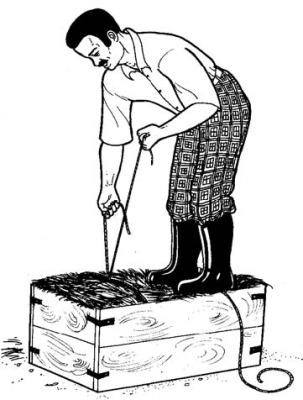

Sorghum midge (Stenodiplosis sorghicola)
It is reported as one of the most important pests of sorghum in some countries, whilst in others (e.g. Ghana) is considered a sporadic pest. Nearly 30% of sorghum grain was damaged by sorghum midge in 1990 in western Kenya. In southern Africa, there are reports of 25% of sorghum grain damaged by sorghum midge (CABI, 2000). The adults are small (3 mm long), deep-red midges, with transparent wings. Eggs are laid in the flowering heads. The small orange larvae feed in the developing seed. Attacked seeds become shrunken and flat resulting in empty or "chaffy heads" as shrivelled grains fail to develop. The larva pupates inside the spikelet, and before adult emergence, the pupa wriggles its way to the tip of the spikelet. After adult emergence, the pupal case remains attached to the chaffy spikelet. Thus, damaged panicles have small, transparent midge pupal cases attached to the tip of the damaged spikelets.
- Synchronised planting. Epidemics of sorghum midge damage are common within an area, when sorghum is not planted at the same time, or different cultivars are planted that do not mature at the same time. Although landrace varieties often flower uniformly, high-yielding, early-flowering cultivars often do not. Sorghum that is planted and flowers later than normal is exposed to sorghum midge for a longer period and can suffer severe damage.
- Planting density and thinning. Midge damage is reported to be higher in crops with low plant density (CABI, 2000).
- Selective removal of alternative hosts. Wild species of sorghum (for example, S. halepense and S. sudanense) act as alternative hosts for sorghum midge. Midge populations build up early in the season on wild species of sorghum and infest the sorghum crop later in the season. Removing these alternative hosts from the vicinity of the sorghum crop can reduce the rate of multiplication of sorghum midge populations. However, wild hosts also sustain the natural enemies, and thus may help in increasing the role of natural enemies in population suppression.
- Field sanitation. Crop residues should be collected and destroyed to reduce the carryover of larvae in the chaffy spikelets from one season to another.
- Fallowing and close season. Fallowing reduces the carryover and build-up of midge populations from one season to the next. However, this is not a feasible practice for smallholders due to the shortage of land.
- Use tolerant or resistant varieties where available. High levels of host-plant resistance are available for sorghum midge. In India, varieties SPH 837 and Pratap Jowar 1430 are claimed to be tolerant to the midge damage (www.nrcjowar.res.in/aicsip2005/achievements_udaipur.pdf). Also in India, variety "DSV-3" is claimed to resistant to midge damage and is recommended to be planted in midge endemic areas (www.uasd.edu/research.htm).
- Crop rotations. Sorghum is generally rotated with cotton, groundnuts, sunflowers or sugarcane. This may reduce the damage caused by the sorghum midge.
- Mixed cropping. Damage by the sorghum midge is reduced when sorghum is intercropped with leguminous crops (CABI, 2000)
